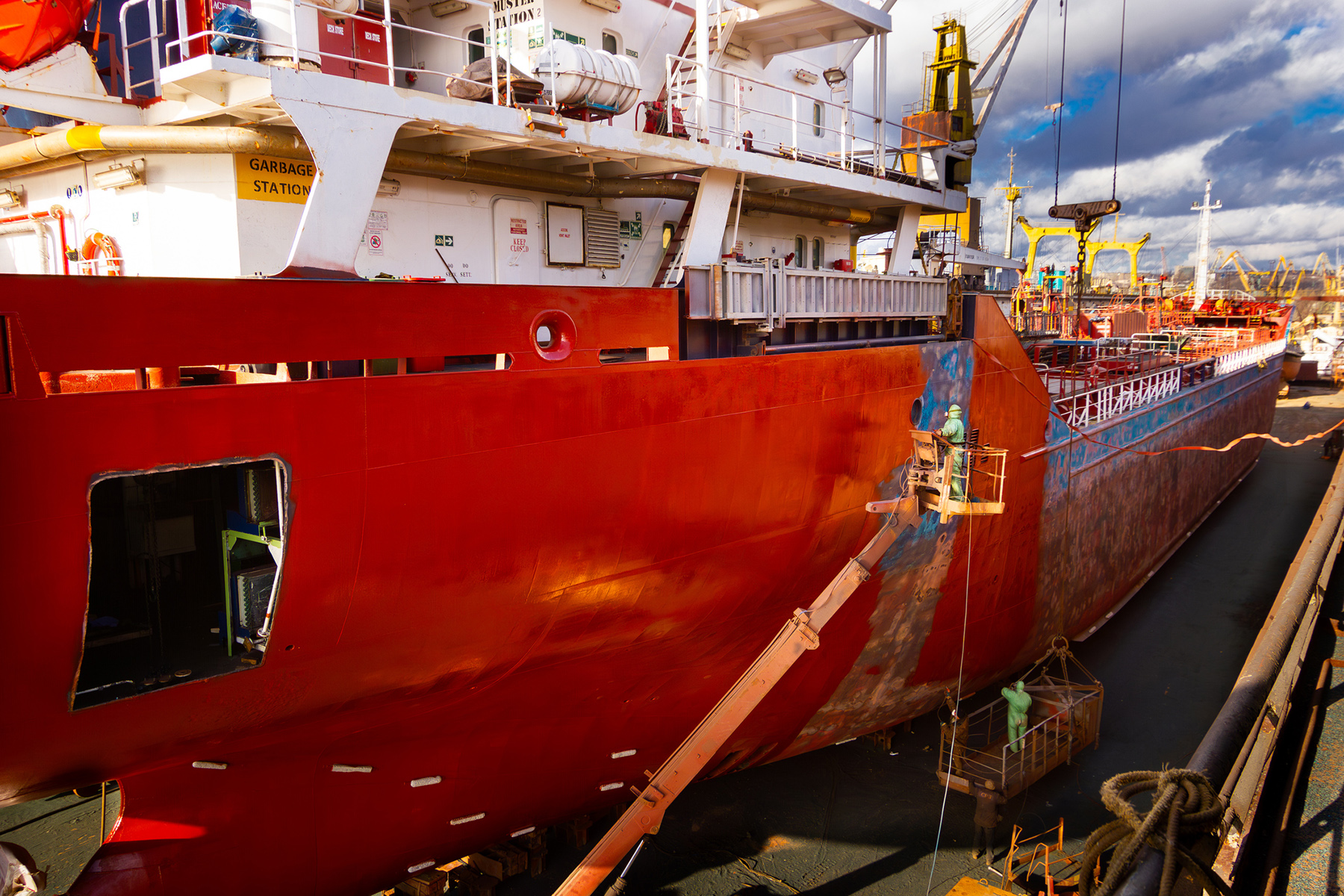
Summer marks the height of cruise season for many, with the various cruise lines pulling out all the stops in their hyper-competitive efforts to give vacationers an all-inclusive immersive experience. According to the Cruise Lines International Association (CLIA), the global cruise capacity is expected to grow 19% from 2022-2028. With the significant uptake in the industry, however, environmentalists are growing concerned about the ships’ impact on marine life and the environment.
Dr. Peter Morton, an associate research scientist in the Department of Oceanography at Texas A&M University, notes that a big problem with cruise and large commercial ships lies in a specific type of paint — antifouling paint — that is used to prevent barnacle and algae build-up on ships' underwater surfaces.
“Fuel efficiency can be greatly hindered by the growth of algae and barnacles on the bottom of the ship,” Morton explained. “To discourage these marine organisms from attaching to cruise ships, it is common to paint the ship hulls with antifouling paint, which often contains high concentrations of copper and/or zinc.”
The paint, which has been used since the early days of sailing ships, presents a layered problem: As it is used to decrease fuel consumption and lower operation costs, it simultaneously harms marine life, according to a study published by the American Chemical Society.
“Like almost all ships, cruise ships burn fuel for power,” Morton said. “The more fuel efficient the ship, the lower the costs will be to operate the ship, resulting in greater profits for the company and lower ticket prices for the passengers. Greater fuel efficiency will produce less carbon dioxide, which lowers the carbon footprint left by the cruise ship.”
On average, most commercial ships spend anywhere from 30 to 50 years in the water, giving them ample time and opportunity to leach into the ocean. The paint contains high levels of potentially toxic trace elements (PTEs), which can quickly become dangerous for both marine life and human health.
“The paints are designed to slowly but constantly release PTEs into the water,” Morton said. “When ships regularly visit specific ports, the PTEs from the antifouling paint continue to be released into the water, and the concentrations of PTEs can accumulate in the water or the shallow sediments.”
The accumulation of PTEs in the ocean means that they can quickly build up in small marine organisms, several of which are found on the menus of seafood restaurants. When ingested, these metals can pose a significant health risk, having the potential to cause developmental abnormalities, kidney diseases and even mental illnesses.
“Certain marine species are sensitive to these metals,” Morton said. “Crabs, shrimp, fish and mollusks like oysters and barnacles can accumulate higher concentrations of PTEs from the water and sediments. These organisms are as economically important as seafood and can then be a source of heavy metals to humans.”
When it comes to solutions, marine biologists are working on developing healthy alternatives for antifouling paints. One option even includes a fan-favorite kitchen spice, cayenne pepper, which can boost the paint’s performance and stop rapid aquatic growth, according to Lakeside Marine and Motorsports.
Given antifouling paint’s real impacts on the shipping industry, human health and marine life, the need for a cost-effective and easily manufactured solution is more important than ever, Morton explained.
“The U.S. Navy has supported the research and development of benign antifouling paints through the Office of Naval Research for decades, including within the Department of Chemistry,” Morton said. “Continued advances in novel antifouling treatments will benefit the Navy and all maritime activities, including the cruise ship industry.”
In one example made possible by Office of Naval Research support more than a decade ago, Texas A&M chemists developed an innovative strategy to inhibit marine organism attachment and adhesion by constructing nontoxic polymer coatings composed of nano-to-microscopic patches featuring differential chemical composition, structures and properties in combination with topographic complexities. However, those novel systems were based upon fluoropolymers now receiving increasing attention and concern as part of the class of PFAS more commonly known as “forever chemicals.” The researchers, led by Distinguished Professor of Chemistry Dr. Karen Wooley, have since shifted to materials derived from naturally sourced carbohydrate-based polymers that exhibit similar nontoxic antifouling behaviors with a built-in bonus: biological or environmental degradation.
“These new directions enhance sustainability of the coatings while also avoiding contributing to the ongoing global plastics and microplastics pollution problem,” Wooley added. “The health of our oceans and port environments depends on the combined efforts of us all.”
